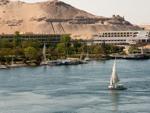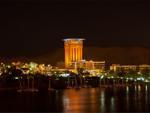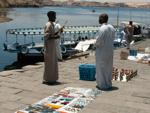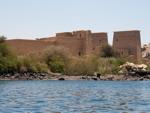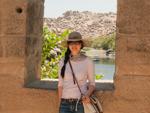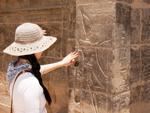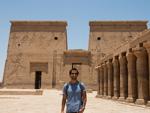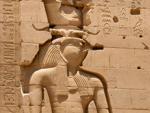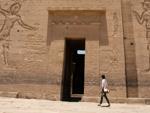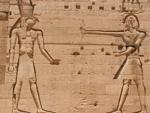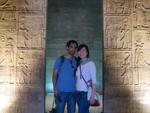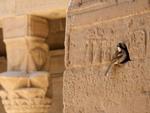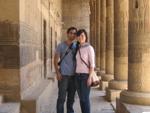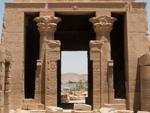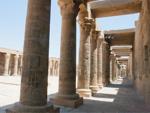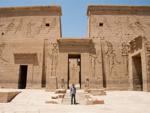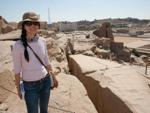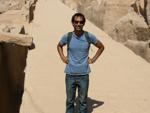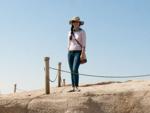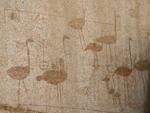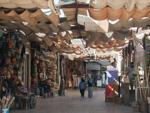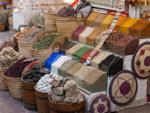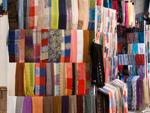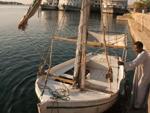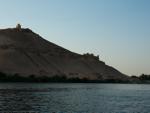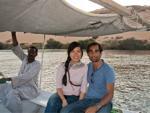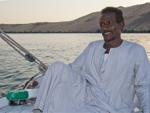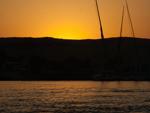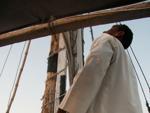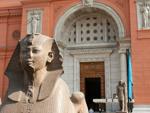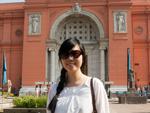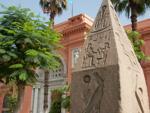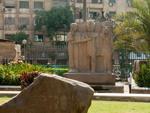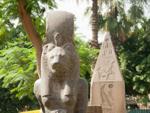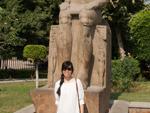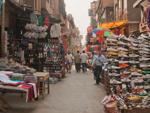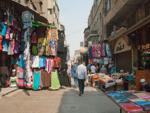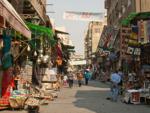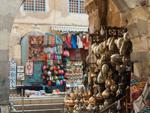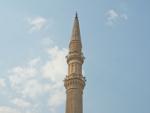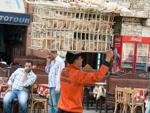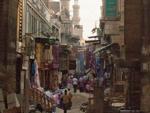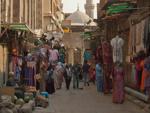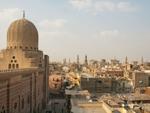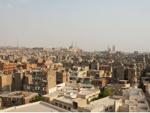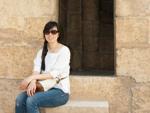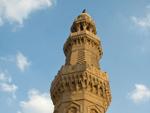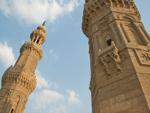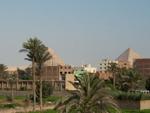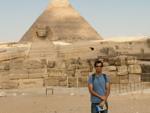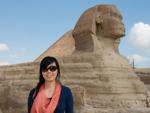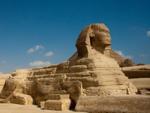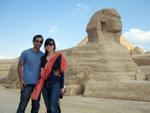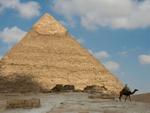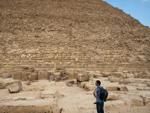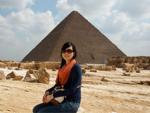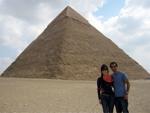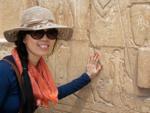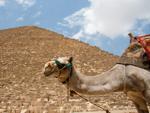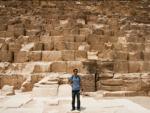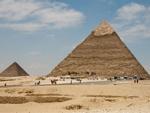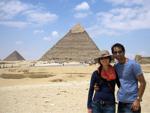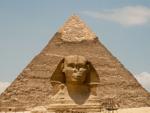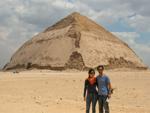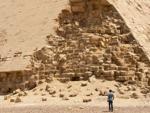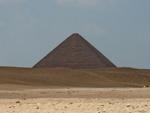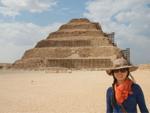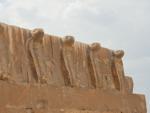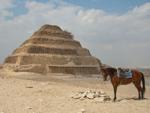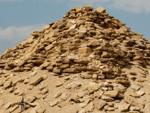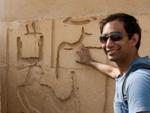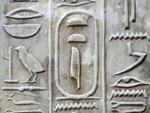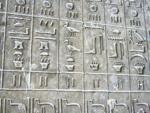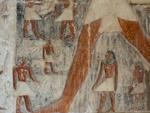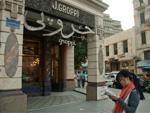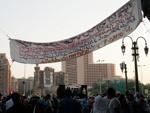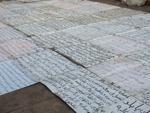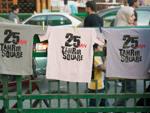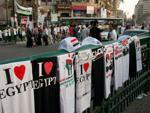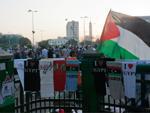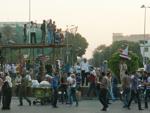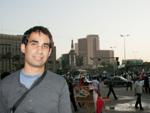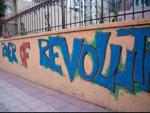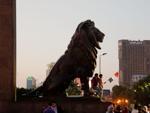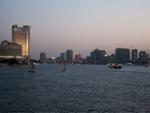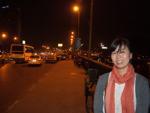We caught the Abela Sleeping Train from Cairo to Aswan. It was $60 USD per person for the twelve hour trip there, which included dinner and breakfast. I had caught overnight trains in India but this one was very comfortable in comparison. We had a cabin to ourselves which had a small table, a sink, a seat (which converted into one bed) and a fold up bed above it. Dinner was an aeroplane-like meal (various formats of chicken, salad and bread, some pastries), drinks were extra.
thydzikgooglemap(http://sonyaandtravis.com/maps/egypt-2011-cairo-to-aswan.xml)
The following morning I awoke to hear passengers get off for Luxor. That meant about three more hours before our stop, Aswan. We headed to the dining cart for some coffee. As it was daylight, we could now see the beautiful scenery outside the train – a view of the Nile and its rich fertile land.
We arrived around 9:30 am in Aswan. As soon as we departed the train the atmosphere felt very different to Cairo. It was much hotter… and seemed more relaxed, laid back. We headed towards our hostel, walking through the souk. The shops were selling Nubian-style goods, Nubian being the local people of Aswan.
Our hostel was not far from the souk. We were given a lovely room with absolutely stunning views of the Nile. We booked a driver with our hostel who would take us to three places that day – Temple of Philae, the High Dam and The Unfinished Obelisk.
Temple of Philae
The Temple of Philae was our first stop, about fifteen minutes away from the city. The temple is located on an island and so requires travel by boat. The LP stated that the price of the boat trip was about 20 EGP per person, however the boat taxi men insisted on a price of 50 EGP per person! (It’s about a ten minute boat ride). Fortunately, we came across a friendly Brazilian couple who were looking to share costs, in the end we paid 100 EGP for four of us on one tiny dinghy.
The Temple of Philae was actually originally located at Philae Island but moved to Agilkia Island due to rising water levels from the Aswan High Dam. We had watched a number of Ancient Egypt documentaries and recognised the front of the temple as we approached by boat – with its beautiful inscriptions across the front. One of the benefits of travelling post-revolution was that there was barely anyone at most of the sites we visited. At Philae there were a handful of people. It was peaceful, serene and stunning.
thydzikgooglemap(http://sonyaandtravis.com/maps/egypt-2011-temple-of-philae.xml,s)
High Dam
The High Dam was a drive further south from Philae. Aside from the view of Lake Nasser, it wasn’t too eventful and could have been skipped. However, it was interesting to see how and why the dam was built and the effect it had on the surrounding areas.
Unfinished Obelisk
The Unfinished Obelisk has an interesting story. Aswan was the primary source of granite during ancient Egypt. Due to the many pharaohs desires of leaving their legacy, granite was important for making obelisks and other monuments and statues. The unfinished obelisk is a forty-two meter long humungous piece of granite which was planned to be the biggest obelisk ever. But after three or four months into its making they noticed that there was a major flaw /crack in the granite hence having to abandon it. The obelisk is located in a quarry where there is evidence of other obelisks being cut out of the granite (some are now in Karnak, Luxor or Thebes as it was known then). The quarry men who worked carving out these monuments lived on the quarry, as can be seen by various pictures carved on the surrounding rocks. It is said they came from places afar, as the pictures are of exotic birds and dolphins which are not generally found in the area.
thydzikgooglemap(http://sonyaandtravis.com/maps/egypt-2011-unfinished-obelisk.xml,s)
Aswan Souk and Felucca Cruise
In the evening we decided to take a walk through the souk and later take a felucca on the Nile. It was extremely relaxing and romantic, watching the sun set across the Nile.
We had dinner at a restaurant on the Nile – traditional Nubian fish tagine (which was delicious) and shish tawook (grilled chicken, always a favourite).
thydzikgooglemap(http://sonyaandtravis.com/maps/egypt-2011-aswan.xml)





































































































